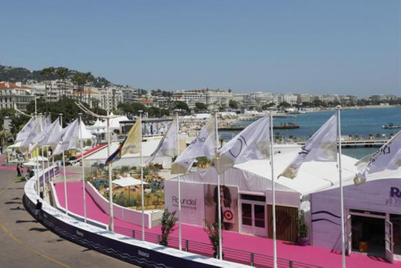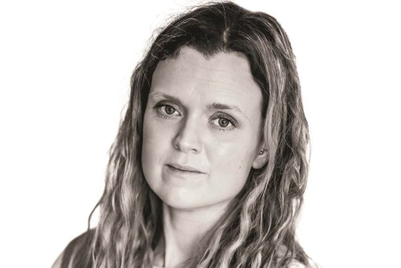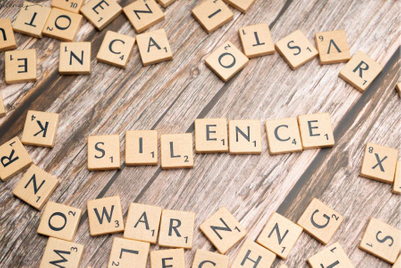A metal tally of only 13 wins at the Cannes Lions meant that questions were going to be asked about India’s performance.
One of the theories that does the rounds in a bad year, is that jurors from some parts of the world do push for work from their regions, or in other cases, push for work from their networks. And there’s another which says that some jurors ‘under-score’ competition. Some adlanders who have served on juries rubbish these theories, adding that there is a system to ensure the results are ‘bias-proof’, even if there did exist a human bias.
Santosh Padhi, chief creative officer and co-founder, Taproot India, is of the opinion that some jurors do have a tendency to help their networks. He says, “What happens inside... I don’t think it’s a bias. But my experience from 2013 could be very different from what happened in 2015. I think at times people have a soft corner while judging work from their own network. We all love our kids and family – but there’s a certain way of pushing it. You can only put across your point but can’t shove it in. Some people do it smooth – some people do it shamelessly. It’s a big game that everyone’s playing because they ultimately want to push their network to win.”
He adds, “It depends on the sensibility of the jury. You need those two or three guys who are very vocal about things. These guys can change people’s mind.”
Famous Innovations’ founder and chief creative officer, Raj Kamble agrees with Padhi on some counts. “They (jurors) have a soft corner for work from their country – they’ll look to influence the other jurors. From my country or network I’ll put a thought in front of the jury. I definitely think Tista Sen (NCD, J. Walter Thompson, Glass Lions 2015 jury member) would have influenced the jury by putting her point about ‘Touch the pickle’ that won a Grand Prix. Sometimes the jury doesn’t get the point, and the campaign can be a victim,” says Kamble.
Juju Basu, creative consultant and former VP and ECD at Contract Advertising, who was on the jury in 2013, adds, “There are attempts, but at the end the jury heads are capable of catching the plugs. I don’t think it’s wrong in pushing work from your country. It’s not like you’re taking the jury head out for a drink or something. The wrong entries can’t go through. The jury heads are all seasoned, responsible people. The right ideas win. But everyone tries their luck at making sure the jury has seen the work. One can’t bull****. You’re sitting in a room and arguing with people who know their stuff. The jury head has too much on the line too – he/she has to go on stage and have answers as to why a particular idea won.”
Akshay Kapnadak, ex-NCD, McCann Erickson, who was also on the jury in 2013, claims that there is no place for bias, but he refers to some agencies and countries showing ‘solidarity’. “I’ve seen solidarity from the South American contingent. They don’t necessarily gang up against countries, but someone from a country like Chile would stand up for an entry from Mexico, because they understand the culture and explain why an entry is big. If s/he feels someone from the jury hasn’t warmed up to the idea, the jury member steps in to make the case clear. It’s not a bias, but an attempt to get the jury sensitive to what happens in his or her country. There’s also a theory of big agencies being accused of under-scoring (their rivals). I don’t think that happens.”
KV Sridhar, chief creative officer, SapientNitro, India, rules out any of these biases citing an algorithm cracked by organisers that prevents this. He explains, “This nullifies all bias one can have towards a country, network or holding company. We’ve been told about this and if anyone is seen to be biased towards anything they’ll be warned. Three or four years ago there was an accusation by one network that the other was trying to overshadow it by under-scoring – so they (organisers) have taken all kinds of precautions to make the festival unbiased. They’ve gently advised and reminded people on under-scoring or over-scoring towards your own country etc.”
He surmises, “This year, we voted five times for the Grand Prix because it was a deadlock. It was a majority call. There is absolutely no room for influencing or any kind of bias. Jurors don’t push for the entry – but people look to explain the background of a campaign etc. I did that this year for Mumbai Mirror.”
 Santosh Padhi, CCO and co-founder, Taproot
Santosh Padhi, CCO and co-founder, Taproot
“From the outside, people will keep sulking if their entry doesn’t win. You should trust the judgment of the jury. The moment you change different juries there will be a different result. Forty per cent will be constant.”
 Raj Kamble, founder and Cco, Famous Innovations
Raj Kamble, founder and Cco, Famous Innovations
“In general, I don’t think they are biased. I think there is a soft corner for work from their country or network. Sometimes it makes sense for them to push across a point to the jury, as it could be that the rest of the jury doesn’t get the point.”
 Juju Basu, creative consultant and former VP and ECD, Contract Advertising
Juju Basu, creative consultant and former VP and ECD, Contract Advertising
“There’s a lot of PR that surrounds the entries. For a few years we sent a book with Indian entries to jury members. We’d seen Thailand and some Latin American countries doing this.”
 Akshay Kapnadak, ex-NCD, McCann Erickson
Akshay Kapnadak, ex-NCD, McCann Erickson
“Sometimes solidarity is considered to be a bias. It’s not. It makes conversations richer and rewards the right work. There is a trend I’ve seen over the last eight years – juries are getting culturally sensitive.”
 KV Sridhar, chief creative officer, SapientNitro, India
KV Sridhar, chief creative officer, SapientNitro, India
“There were accusations that Latin Americans and other Asians vote for their region, but Indians don’t vote for it. But, none of this works. You can’t under-score Indian work. The person who does so will be reprimanded. One can’t over-score and under-score, because a trend will be spotted and averages will be taken.”

 Santosh Padhi, CCO and co-founder, Taproot
Santosh Padhi, CCO and co-founder, Taproot Raj Kamble, founder and Cco, Famous Innovations
Raj Kamble, founder and Cco, Famous Innovations Juju Basu, creative consultant and former VP and ECD, Contract Advertising
Juju Basu, creative consultant and former VP and ECD, Contract Advertising Akshay Kapnadak, ex-NCD, McCann Erickson
Akshay Kapnadak, ex-NCD, McCann Erickson KV Sridhar, chief creative officer, SapientNitro, India
KV Sridhar, chief creative officer, SapientNitro, India

.jpg&h=334&w=500&q=100&v=20250320&c=1)
.jpg&h=334&w=500&q=100&v=20250320&c=1)



.jpg&h=334&w=500&q=100&v=20250320&c=1)
.jpg&h=334&w=500&q=100&v=20250320&c=1)


.jpg&h=334&w=500&q=100&v=20250320&c=1)


.png&h=268&w=401&q=100&v=20250320&c=1)

.jpg&h=268&w=401&q=100&v=20250320&c=1)

.jpg&h=268&w=401&q=100&v=20250320&c=1)

